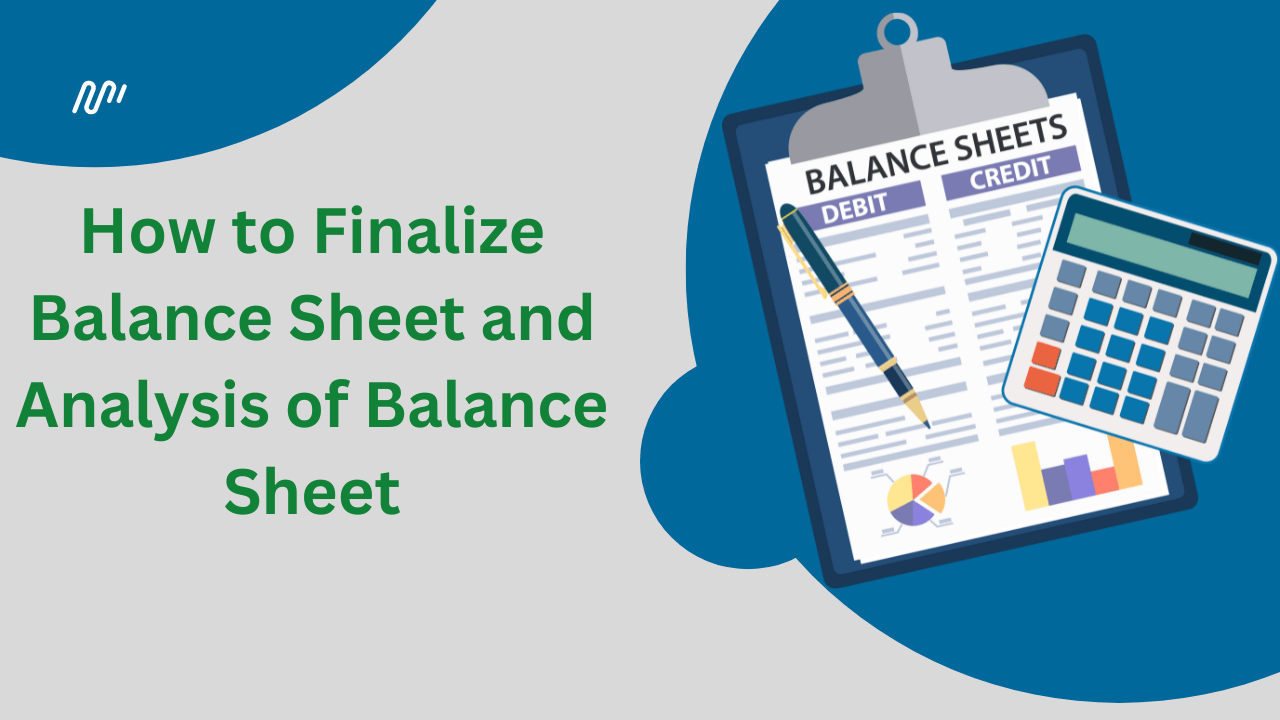How to Finalize Balance Sheet and Analysis of Balance Sheet. A balance sheet is a summary of a business’s financial health on any given day. It shows a company’s assets, liabilities, and equity accounts. In this article, you can find some basic details on How to Finalize the Balance Sheet and Analysis of the Balance Sheet. Must Read Objectives of Accounting.
If you like this article then please like us on Facebook so that you can get our updates in the future ……… and subscribe to our mailing list ” freely “
Quick Links
How to Finalize Balance Sheet and Analysis of Balance Sheet
Steps for Making and Finalizing a Balance Sheet:
- Determine the date of the balance sheet: The balance sheet is created to show the assets, liabilities, and equity of a company on a specific day of the year. Hence, it is necessary to decide on that date.
- Divide into two heads: Assets and Liabilities.
- Calculating Your Assets: Assets are anything of value that is owned by the company.
- Classify them into Current and Non-Current Assets.
- Current assets include cash, stocks and bonds, accounts receivable, inventory, prepaid expenses, and anything else that can be converted into cash within one year or during the normal course of business
- Fixed Assets are also known as Long-term assets. Fixed assets are the assets that produce revenues. They are distinguished from current assets by their longevity. They are not for resale.
- Compute the Total Assets.
- Calculating Your Liabilities: There are two types of liabilities: current liabilities and long-term liabilities.
- Current liabilities are accounts payable, accrued expenses (such as wages and
salaries), taxes payable, etc. which are required to be ordinarily paid in the near future. - Long-term liabilities may include financing from relatives, banks, finance companies, or others.
- Compute Total Liabilities.
- The formula that defines the balance sheet is assets = Liabilities + Net Worth.
- Net worth is what is left over after liabilities have been subtracted from the assets of the business. It indicates the capital existing on a particular date.
- After completing the above steps, the total of both sides, that is, the debit and credit sides should be calculated and it must be the same. Must Check Basics of Tally.
Analyzing a Balance Sheet through various ratios:
- We can calculate some financial ratios that will help us to easily analyze the balance sheet.
- Let us have a look at a few such ratios/calculations:
i) Quick Ratio:
Quick Ratio = (Current Assets – Inventories)/ Current Liabilities
The Quick Ratio indicates a company’s ability to meet its short–term obligations with its liquid assets. The higher the quick ratio, the better will be the liquidity of the company.
ii) Current Ratio:
Current Ratio = Current Assets/ Current Liabilities
It is used to determine the company’s position with regard to its ability to repay its short-term liabilities.
iii) Debt / Equity Ratios:
- Short Term Debt to Equity Ratio = Short Term Debt/ Shareholders Equity
- Long Term Debt to Equity Ratio = Long Term Debt/ Shareholders Equity
- Debt to Equity Ratio = Total Liabilities/ Shareholders Equity
These ratios basically determine how the company can finance its growth. You may also like Tally ERP 9 Short Cut Keys.
iv) Turnover Ratios:
Debtors Turnover Ratio = Turnover / Average Debtors
Inventory Turnover Ratio = Cost of Goods Sold/ Average Inventory
Inventory to Sales Ratio = Inventory/ Revenue
v) Capital Structure Ratios:
- Total Liabilities to Total Assets = Total Liabilities/ Total Assets
- Short Term Debt to Total Debt = Short Term Debt/ Total Debt
- Long Term Debt to Total Debt = Long Term Debt/ Total Debt







